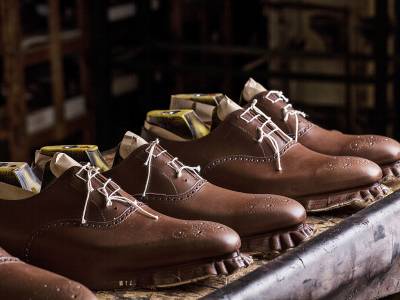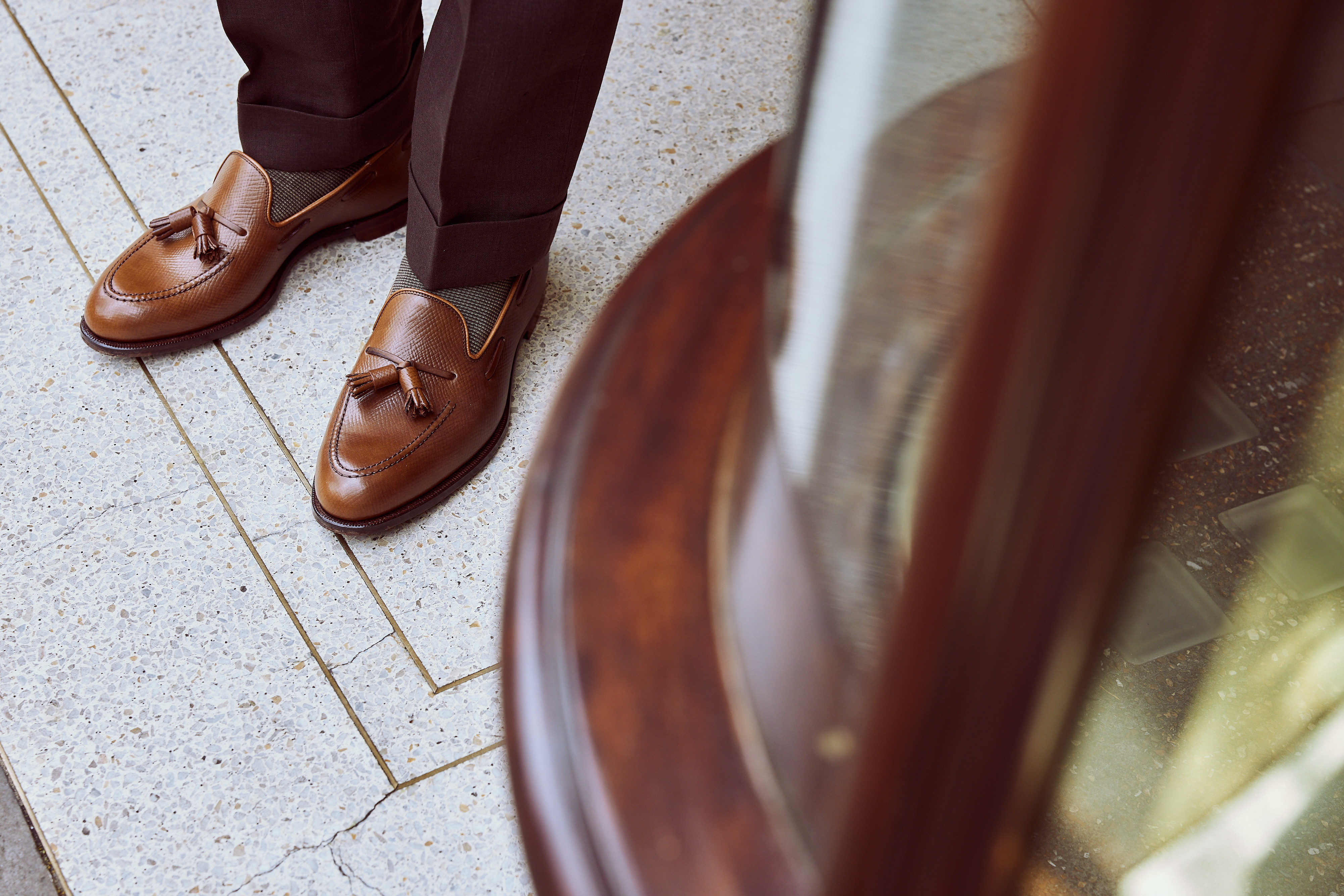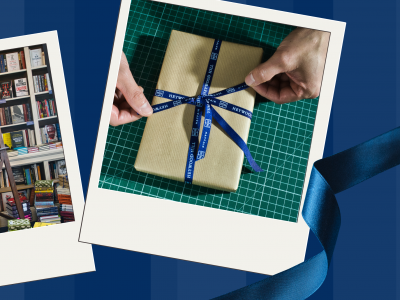Forty-five years ago Jonathan Jones was a 25-year-old weighing up his options. Should he go into law, which he was studying, and pursue what interested him, as his two brothers had already done with farming and medicine? Or should he get involved with the family business of making all kinds of shoes for all kinds of markets, one his relatives had already steered for three generations? This, he knew, was in many respects not a good time to join.“The company was going through a bad patch,” Jones recalls. “My father was up against it and needed some help. And there was a sense that if I didn’t get involved now I could miss out, because the business might not be there in five years time. In the back of my mind there was always this thought that I should join the business out of principle — because after four generations you don’t want to let that kind of connection easily go. But I didn’t know much about the shoe industry at that time. And it wasn’t easy initially. I soon discovered that there were a lot of problems.”Not least that, as Jones frames it, the old guard had somewhat failed to read a shift in the market towards more fashion-oriented footwear, neither quite making a bold move into that market, nor doubling down as a more specialist craft maker of formal men’s shoes — which, Jones notes, a lot of people were insisting were on their way out for good. Throw in nervous banks, high interest rates, and the independent shoe retail scene in decline, and it was small wonder that the 1970s saw the closure of many competitors.“Moving with the times enough, focusing on the very top-end products and getting them into the export markets that want them” was, as Jones puts it, a hard lesson he quickly took on board. “We took a hit. We had to do a lot of product development, which I muscled in on myself. And it all worked out.”
Stepping Up: Crockett & Jones embrace the future
27th September 2022
Northampton shoemaker Crockett & Jones mixes traditional techniques and quality with a sharp eye for the modern market
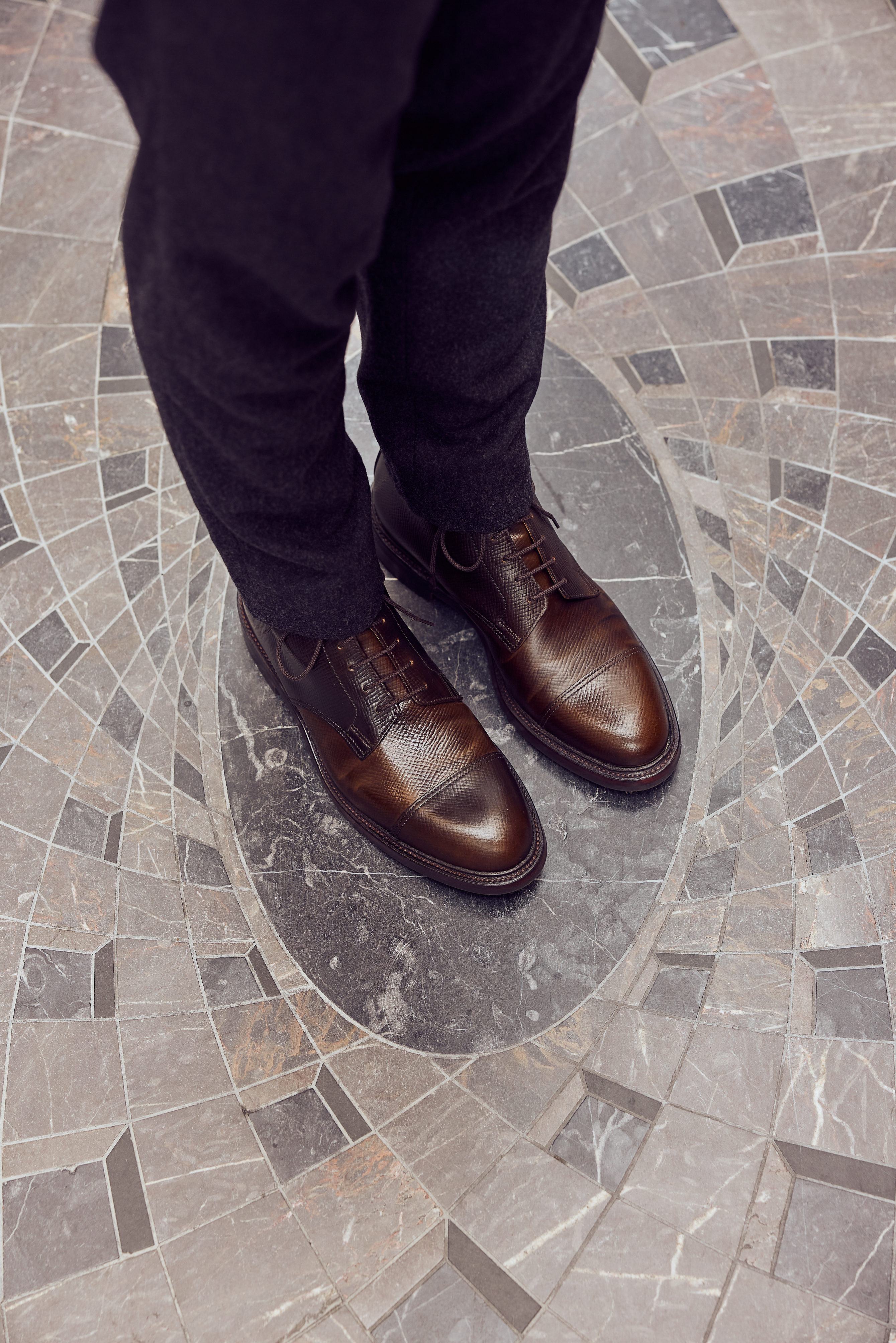
Indeed, Crockett & Jones, founded in 1879, is one of Northampton’s few remaining makers of Goodyear-welted shoes — a complex process that makes a shoe extremely durable, as well as comfortable, and allows for almost endless re-soling. It has, over recent decades, also grown to become one of its biggest, making over 100,000 pairs a year. Northampton is known globally as being to fine men’s footwear as Savile Row is to tailoring and Crockett & Jones is an international byword for being among the best the East Midlands town has to offer
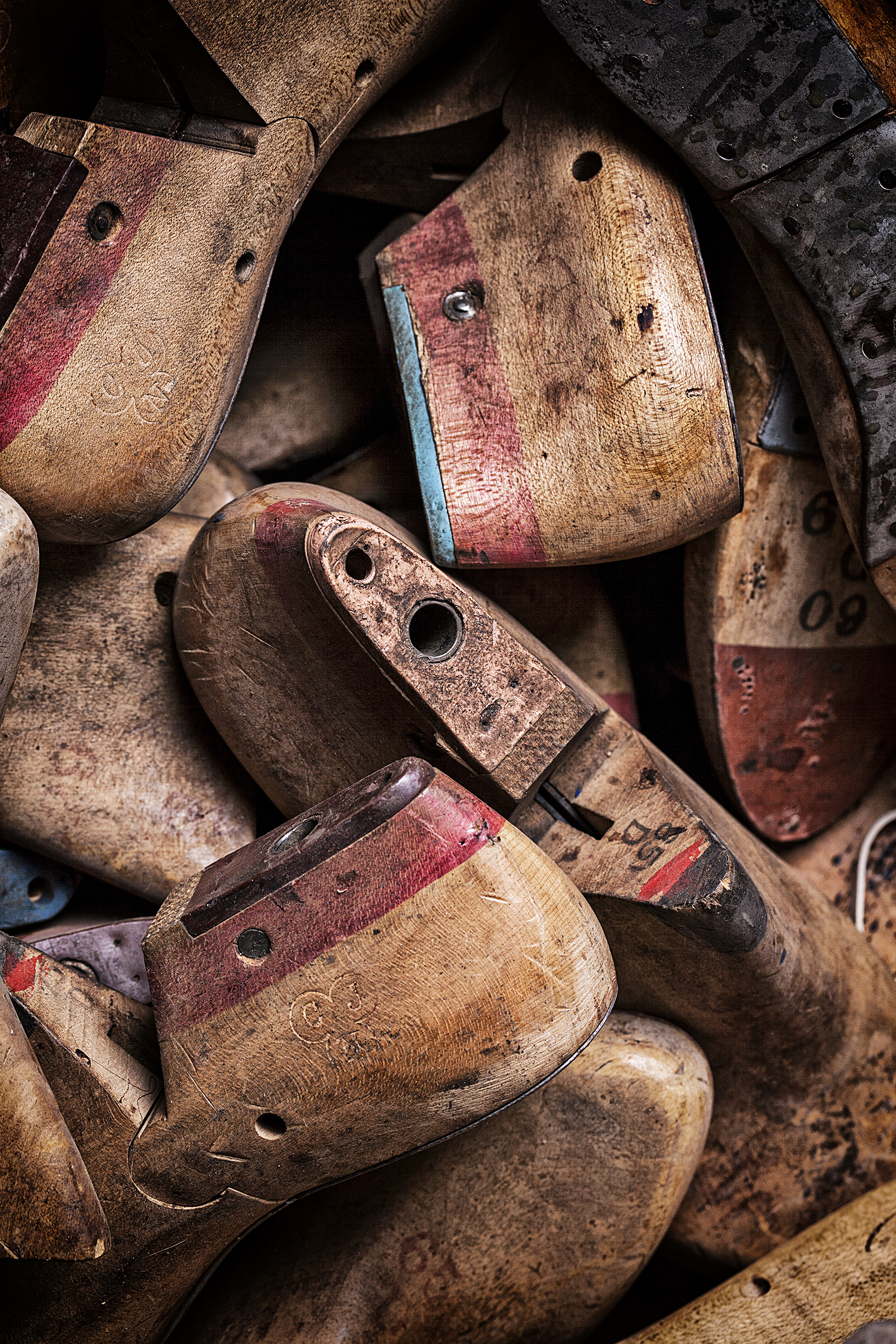
“There has always a great heritage at Crockett & Jones to give the company backbone and to inspire,” says Jones, now its managing director. “Early on I remember looking at the company’s designs made back in the 1910s and 1920s and being impressed by what really great shoemaking it was. And I knew that’s what we had to get back to. But we also needed to have our own shops, if only to project the brand to the world. A lot of shoe manufacturers were fearful of that because they saw themselves as being ‘just manufacturers’. And so were we, really. I didn’t know much about retail either. But we just thought ‘well, it can’t be that difficult’.” Perhaps 25 years proudly situated on the traditional menswear Mecca that is Jermyn Street — an anniversary Crockett & Jones marks this year with reworkings of two of its signature styles, the Cavendish tassel loafer and the Coniston cap-toe boot, in super-luxe hatch grain cordovan — suggest that he’s right. As well as its two Jermyn Street branches, the company has 11 other stores, across the UK, France, Belgium and New York, and recently launched an online shop. “We never had some kind of five-year plan with the intention of opening that and then opening this,” laughs Jones. “It’s grown organically. But you need to be able to show your entire collection in the way you like, and to be able to talk to your customers. And again it’s worked out rather well.” Not that there aren’t still challenges. In a sense, Jones says that he is facing a crossroads for fine English shoemaking somewhat akin to that his father faced before him. Dress codes for work are rapidly changing, compounded by post-pandemic remote working. This inevitably suppresses demand for more classic footwear, and at least one generation has grown up only knowing the instant comfort of trainers. “We talk about Goodyear construction, of course, but how much gets through to customers, especially in the UK, is hard to tell,” laments Jones. “And the market is changing in that the amount of footwear that is sold as ‘fashion’ is enormous. A lot of consumers think more about the brand name or a shoe’s style than the shoe’s construction. It’s really the construction that gives English men’s shoes their reputation, together with the quality of the materials, even if our styling is conservative.” Yet, he adds, it’s precisely that conservatism that underscores Crockett & Jones’s success — and not least, as its head of retail operations Steve Murdoch notes, the fact that it still has its core dress shoe business when “so many other manufacturers have given up on that.”
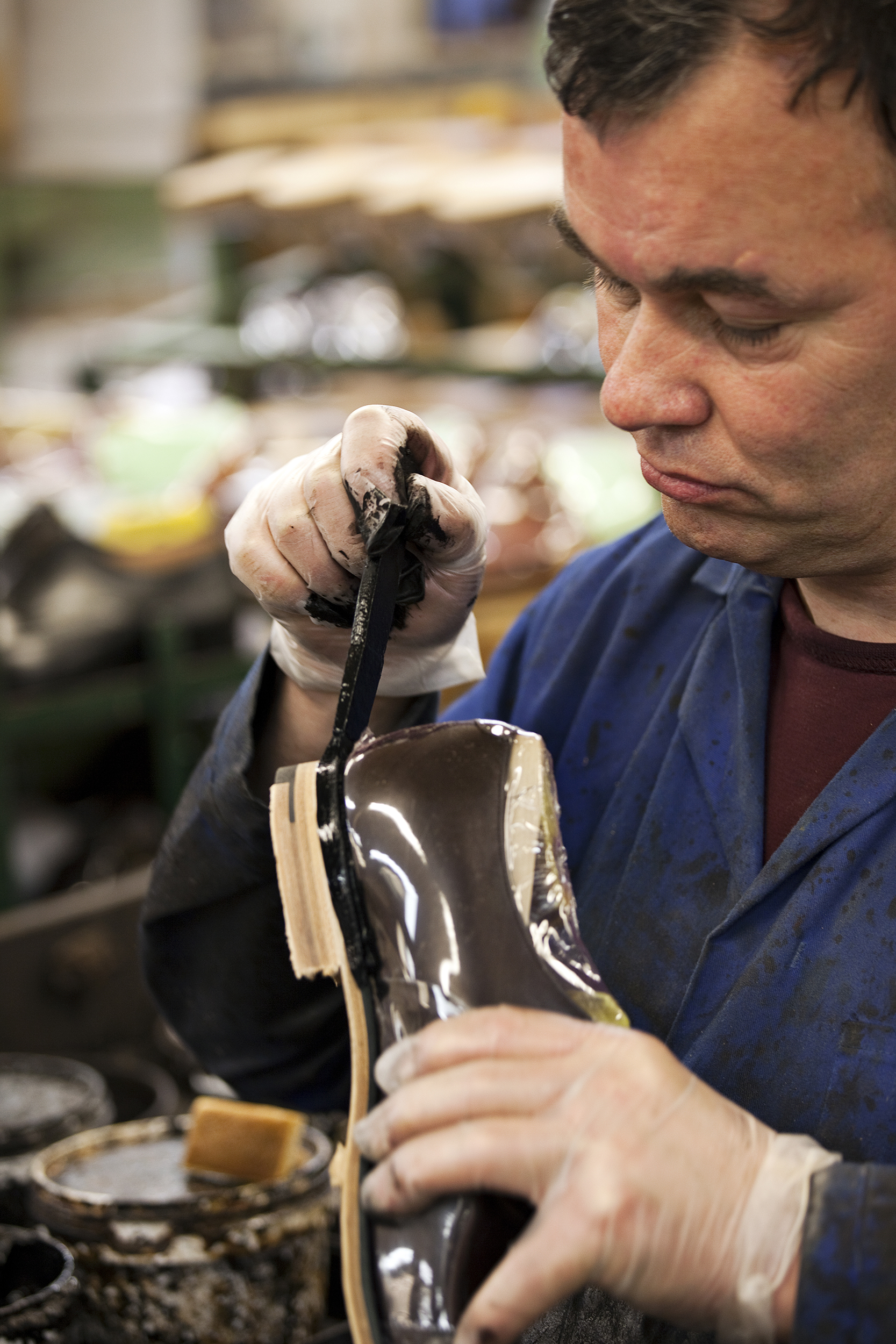
It’s about balance, Murdoch says. “Much as we have to find the right balance for the atmosphere in the shops — they look traditional but they can’t be stuffy — with the shoes we have to have classic styles on a more contemporary last too, because no young customer that comes in wants to dress like their dad. We always have to keep broad shifts in how men dress in mind.” That’s why, Jones says, Crockett & Jones now sells far more derby boots, suede chukkas and rubber-soled tassel loafers than it does black Oxfords. And yet there are limits. A generation ago the company had to fight the temptation to chase fashion. Today, says Jones, it’s about fighting the temptation to chase the trainer business. It’s a temptation many English men’s shoemakers have given in to. Jones isn’t convinced. “There are companies that can make sneakers far better than we could. We need to concentrate on what we’re good at: Goodyear-welted shoes,” he insists — not least because to do otherwise is to risk bringing confusion and inefficiency to the factory, where smooth running is essential to get the best out of a production line still rooted in craft skills and hand work. “The great thing about Goodyear welting is that it adapts to all kinds of shoes — smart, durable shoes that aren’t going to look silly in five years time. As with all the Northampton makers, we’re not a must-have high fashion brand that can command the premiums they do. We are in it for the long run. I think there will always be people who want high-quality English men’s shoes.” And, it seems, to get involved in making them too. Perhaps the most important boon to the future of Crockett & Jones in recent years has not been its move into e-commerce, its relationship with one James Bond — a regular customer for the character’s recent cinematic outings — or, in 2017, the award of a royal warrant by Prince Charles. Rather, it’s that not one but three members of the fifth generation of the Jones family have already joined the company. And they can thank Jonathan Jones for it being in such good shape when they did so. What does he predict will be their battles to keep such an eminent British company in rude health? “With rising vegetarianism it might well be, for example, that in 30 or 50 years time people aren’t so keen on wearing shoes made of leather from cows,” Jones suggests, maybe sounding just a little bit relieved that it’s unlikely this will be his problem. “But we will have plenty of time to adapt if that’s the case. This is the shoe business. The challenges are always there. But I’m quietly optimistic.” crockettandjones.com
